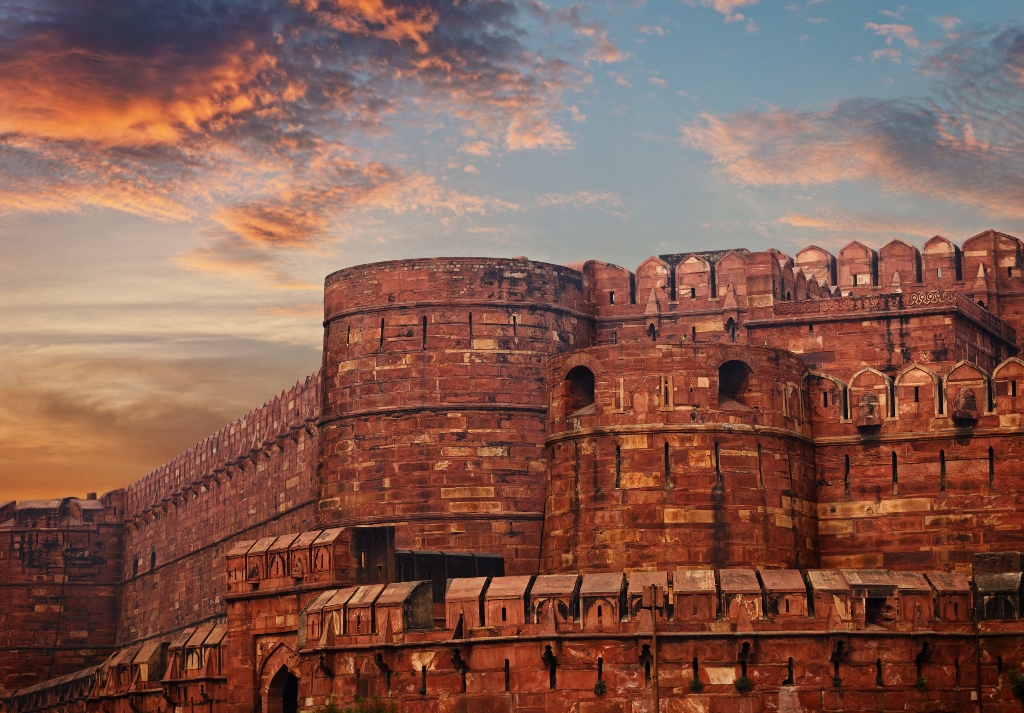History of Medieval India ( Medieval Period )
History of Medieval India ( Medieval Period )
Medieval India period is a significant period in the history of India because of the progress in the field of art and languages, culture and religion. Also the period has witnessed the impact of other religions on the Indian ethnicity. Foundation of Medieval period is marked by the rise of the Rajput clan. Medieval India is also known as the Post classical Era, i.e. 8th to 18th century CE in the Indian subcontinent. It is separated into two periods: The ‘early medieval period’ which lasted from the 8th to the 13th century and the ‘late medieval period’ which lasted from the 13th to the 18th century in some definitions, however many end the period with the start of the Mughal Empire in 1526. It lasted from 8th century AD to 18th century AD.

Rajputs’ Period
After the death of Harsha the Rajputs came into eminence on the political prospects of North India. The Rajputs were known for their courageousness and chivalry but family feuds and strong ideas of personal pride often resulted into conflicts. The Rajputs weakened each other by constant wrangling. The disunity among Rajputs permitted the foreigners (Turks) to penetrate in India. The defeat of Prithvi Raj Chauhan (the greatest Rajput combatant of the time) at the hands of Mohammad Ghori, in the battle of Tarain 1192, marked a new episode in the history of India.
Slave Dynasty
After the demise of Mohammad Ghori, Qutub-Uddin Aibak (Ghori’s lieutenant in India) founded the Slave Dynasty. With this the Delhi Sultanate came into being. Aibak was followed by his slave, Iltutmism, who was succeeded by his daughter, Razia (1236 – 1239). Razia sat on the throne of Delhi for a little while. The Slave dynasty was followed by the Khalji, Tughlaq, Sayyids and Lodi dynasty. Some of the prominent among the Sultanate rulers were Balban, Alauddin Khalji and Mohammad Bin Tughlaq.
Alauddin Khalji & Mohammad Bin Tughlaq
Alauddin Khalji (1296 – 1316 AD) was not only an eminent commander but also an intelligent administrator. He is remembered for his military campaigns in the south as well as market reformation and price control measures. Muhammad Bin Tughlaq (1324 – 1351 AD) was a visionary but unfortunately all his projects failed. His most controversial mission was the transfer of capital from Delhi to Daulatabad.
![]() Read Also : History of Ancient India
Read Also : History of Ancient India
Mughal Empire
After the loss of Ibrahim Lodi in the battle of Panipat, (at the hands of Babur, the founder of Mughal Empire) the Delhi Sultanate came to an end. The Sultanate launched, in the sub continent, the Islamic conception of society and governance, and thus prepared the ground for an astounding interaction between two world civilizations. Babar (1526-30 AD) founded the Mughal Empire in India. He was a descendant of Timur and also of Changez Khan. He was ousted by his own cousins from his small principality in Central Asia and hunted fortune in India. Babar came to India and conquered Ibrahim, the last Lodi Sultan in 1526. Babar was succeeded by his son Humayun but he was ousted from Delhi by Sher Shah, an Afghan group leader.
Jahangir (1605-27), the son of Akbar was a pleasure loving man of sophisticated taste. Contemporary historians have recorded that during his reign the Persian graciousness related to his wife Nur Jahan had become very powerful at the royal court. Jahangir was followed by his son Shah Jahan (1628-58 AD). Shah Jahan was a great lover of building out of which the Taj Mahal is the most legendary. Other remarkable buildings built by Shah Jahan are the Red Fort and the Jama Masjid at Delhi.
Aurangzeb (1658-1707 AD) was a fearless general and a proficient administrator but this intrinsic worth was overshadowed by his religious dogmatism and fanaticism. The Mughal Empire reached its zenith through the reign of Aurangzeb. But at the same time he exhausted his energy and resources in his long drawn out conflicts with the Marathas and other local rulers and principalities. After the demise of Aurangzeb the forceful Mughal Empire began to totter. His successors were feeble and not sufficiently expert of holding the far-flung empire together. The imperial authority was challenged from all corners and the provincial governors began to avow their independence.
Painting was an additional area that was flourished to a great extent during this period. Persian art came to India with Humayun who brought excellent painters with him. Most of the art got influenced by the Islamic traditions. Mughal school of painting kept prospering under the rule of Akbar, Jahangir and Shah Jahan. Jahangir was a great artist and under his rule the Mughal school of painting reached at its zenith. He had many renowned painters in his court.
![]() Read Also : Incredible India
Read Also : Incredible India
Medieval India was a spectacular period and an era of wars and great architecture in India. Also most of the regional languages of modern times have evolved during this period. Regional as well as folk traditions developed to a great amount.

